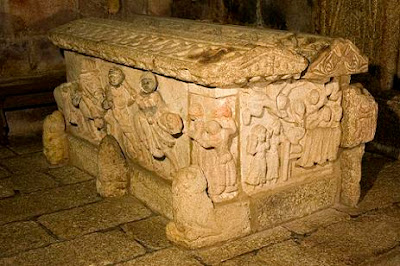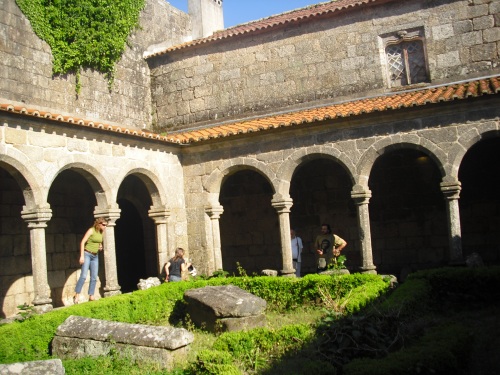Foi fundado no século X por D. Godo Trutesindo Galindes, ascendente de Egas Moniz, o aio, que erguer neste local o seu paço. Serviu de refúgio ao abade Radulfo, aquando das invasões de Almançor (994). Constituía-se em uma comunidade beneditina.
O mosteiro foi desocupado muitos anos depois e veio a cair em estado de degradação. Foi alvo de algumas obras de manutenção no século XI, vindo a ser completamente recuperado em meados do século XIII. Nesta mesma época foi feita a ampliação da Igreja anexa.
Novas campanhas de conservação e restauro foram empreendidas no século XVIII e, mais tarde, no século XX, após um violento incêndio ter devorado os tetos de madeira da igreja em 1927.
Apresenta um estilo arquitetónico na transição entre o estilo românico e o estilo gótico.
Integra o conjunto do mosteiro uma igreja românica de três naves de apreciáveis proporções, na qual se destaca uma bela rosácea na fachada. A sua traça teve influência sobre toda a região de Penafiel, podendo dizer-se que este templo se enquadra no estilo doutros monumentos românicos, como os de Roriz, Gândara, Travanca e Pombeiro.
No interior deste mosteiro encontra-se sepultado Egas Moniz, preceptor de Afonso I de Portugal. No interior do túmulo existe uma pequena caixa de cobre com as suas cinzas fúnebres. O túmulo em si é uma magnífica peça com altos-relevos que retratam a ida do aio de D. Afonso Henriques à Corte do reino de Leão.
It was founded in the X century by D. Godo Trutesindo Galindo ascendant of Egas Moniz, the governor, to build in this place his palace. Served as a shelter to abbot Radulfo, when of invasions of Almançor (994). Constituted themselves as an Benedictine community.
The monastery was vacated very years after and one shafts to drop in state of degradation. Was target of some maintenance works in the eleventh century, come to be completely recovered in mid thirteenth century. In the same time was made an amplification of the attached church.
New conservation campaigns and restoration were taken in the eighteenth century and later, in the twentieth century, after a violent fire the wooden roof was devored in 1927.
Presents an architectural style in the transition between Romanesque and Gothic.
Integrating the conjunt is the monastery Romanesque Chruch of Three ships with significant proportions, in which stands a beautiful rosacea in the front. Their trace TVs influence on the whole region of Penafiel and can tell you that this temple fits the other monuments of romance style, such as Roriz, Gander, Travanca and Pombeiro.
Inside this monastery we can find Egas Moniz, the preceptor of Alfonso I of Portugal, buried. Inside the tomb there is a weird little copper box with his funeral ashes. The tomb itself is a great sin with high-reliefs that portraits the visit of the governor of D. Alfonso Henriques to the court of the kingdom of Lion.







Sem comentários:
Enviar um comentário